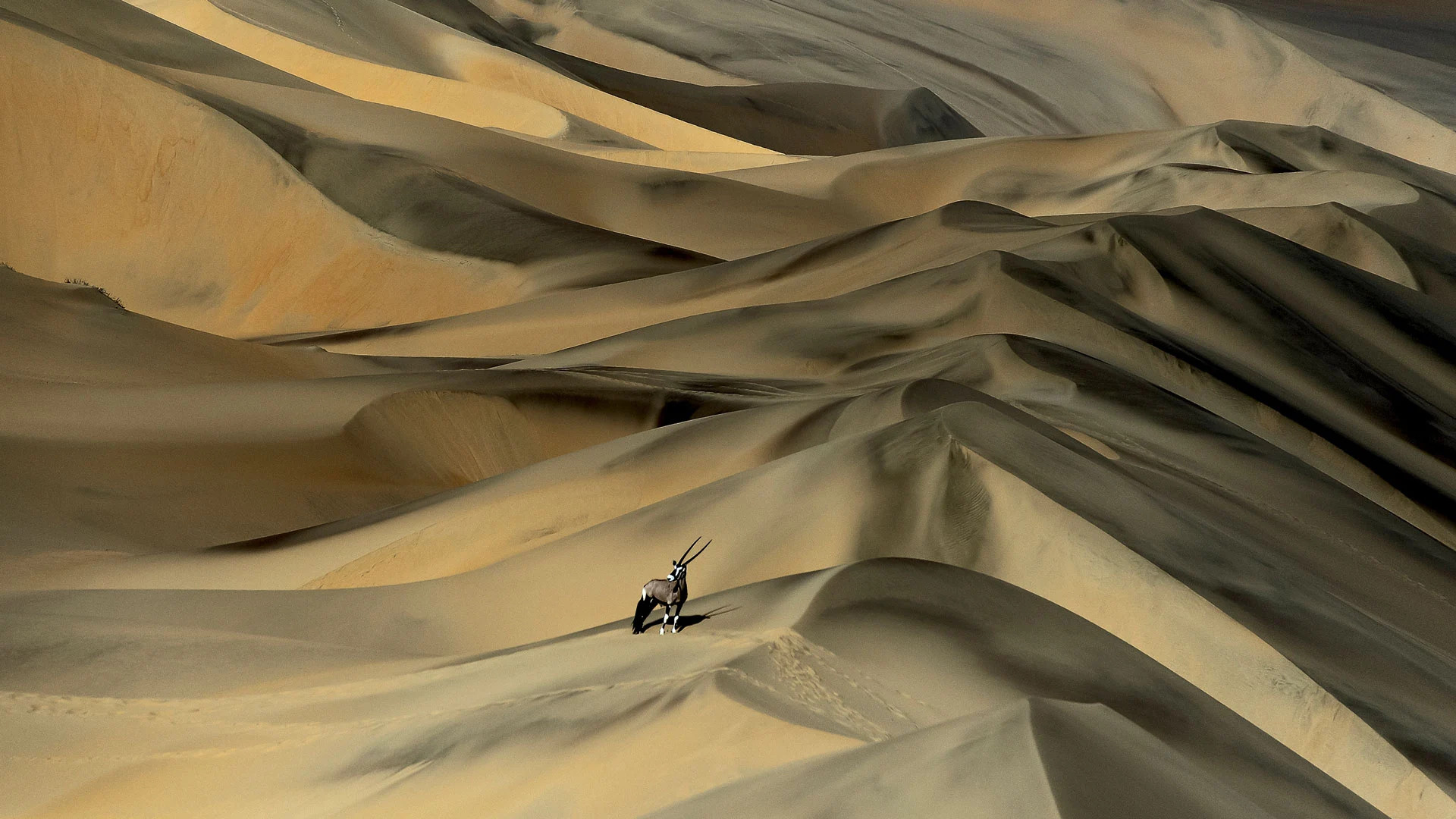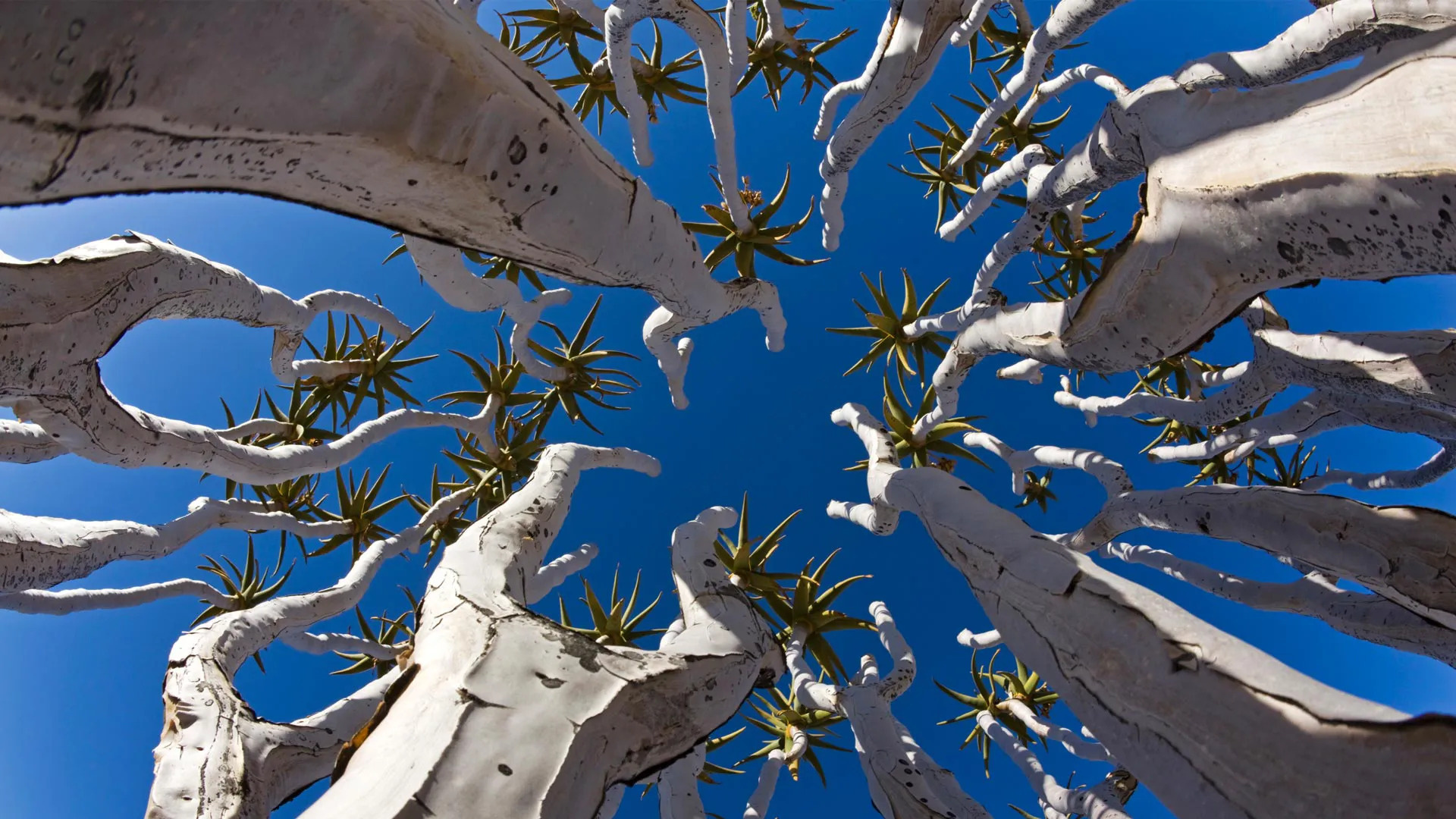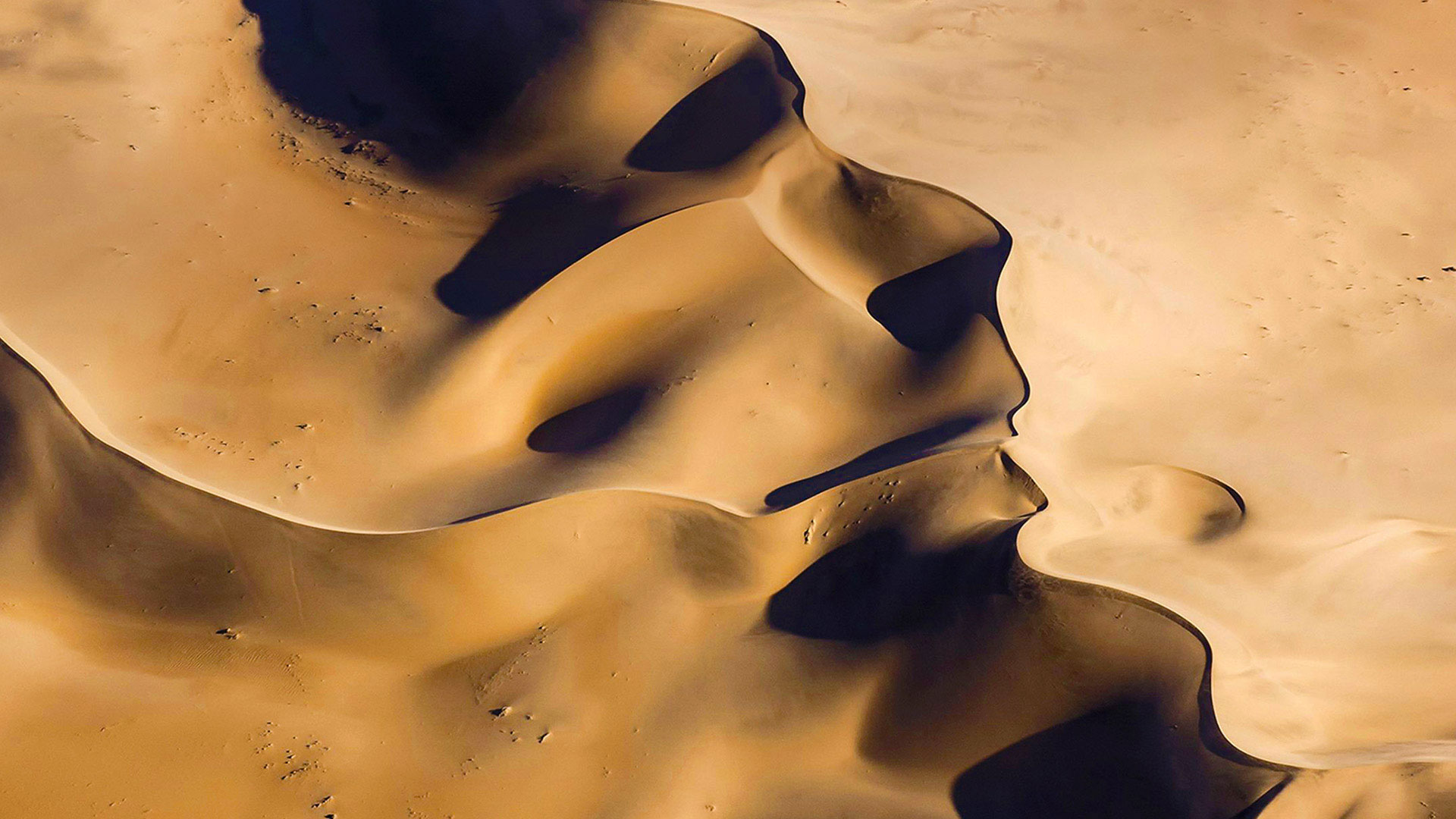标签 纳米比亚 下的文章
沙丘中的南非剑羚,纳米比亚 Gemsbok (Oryx gazella) in sand dunes, Namibia (© Sergey Gorshkov/Alamy)

沙丘中的南非剑羚,纳米比亚 Gemsbok (Oryx gazella) in sand dunes, Namibia (© Sergey Gorshkov/Alamy)
被沙海包围 Surrounded by a sea of sand
纳米比亚沙丘上的南非剑羚
“生命总会找到出路。”虽然《侏罗纪公园》中的马尔科姆博士是在谈论恐龙繁殖,但这句话也适用于生命如何在地球上最恶劣的环境中存活。极端生物是一种可以生活在极端环境下的生物,包括高温、低温或其他超出生命所能适应的条件。例如,在寒冷的北极地区,企鹅和北极熊可以生存;在炎热的沙漠中,骆驼可以不喝一滴水存活几个月;在高酸高温高压的海洋环境中,海洋微生物依然可以茁壮成长。
Gemsbok in Namibian sand dunes
To quote Jurassic Park's Dr. Malcolm: 'Life, uh, finds a way.' Animals and plants are found in some of Earth's most inhospitable places, from penguins and polar bears in the freezing Arctic to camels in scalding deserts. This lonely gemsbok, seen here in sand dunes in Namibia, is used to living in an inhospitable environment. Also known as the oryx, it is native to the arid regions of Southern Africa, especially around the Namib and Kalahari deserts. The gemsbok does not need to drink much water, instead finding hydration in the vegetation it grazes upon—including wild tsamma melons and cucumbers. When vegetation is sparse, they can dig deep to find roots and tubers to supplement their diet.
纳米比亚的植物 Quiver trees in Namibia (© Fotofeeling/DEEPOL by plainpicture)

纳米比亚的植物 Quiver trees in Namibia (© Fotofeeling/DEEPOL by plainpicture)
伸向天空 Stretching to the sky
纳米比亚的箭袋树
箭袋树是一种罕见的植物,生长于气候恶劣干旱的纳米比亚。有趣的是,箭袋树其实根本不是树,而是一种高度濒危的芦荟植物,属于多肉植物。当地土著桑人会将箭袋树的枝干掏空,做成箭袋在狩猎时使用,故名箭袋树。如果你在纳米比亚的冬季(5月到7月)参观箭袋树森林,就能欣赏到这些独特的植物开出鲜黄的花朵。
Quiver trees in Namibia
The quiver trees pictured on our homepage are uniquely suited to Namibia's hot, dry climate. They are not trees at all, but an endangered species of aloe plant. These succulents can grow up to 30 feet tall and live for 200 years. The name comes from the Indigenous San people who made quivers out of the plant's tube-shaped branches to hold their arrows while hunting. You can see scattered quiver trees across southern Namibia, but for sheer numbers, head to the Quiver Tree Forest, where more than 200 of these distinctive plants grow among dolerite rock formations outside the city of Keetmanshoop. In June and July, during Namibia's winter, you can see the plant's flowers in bright, yellow bloom.
